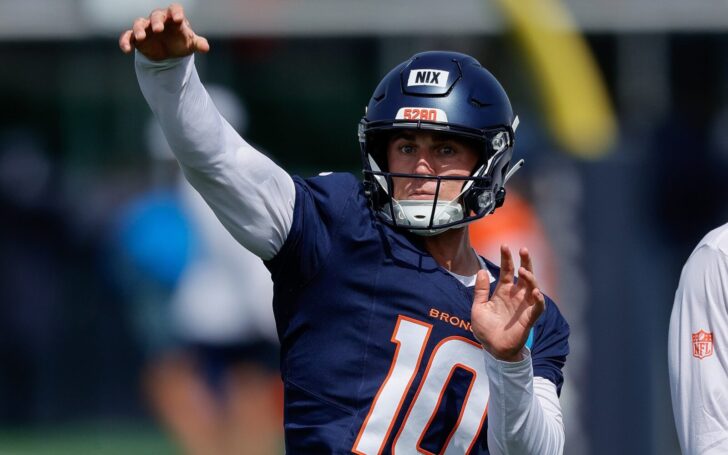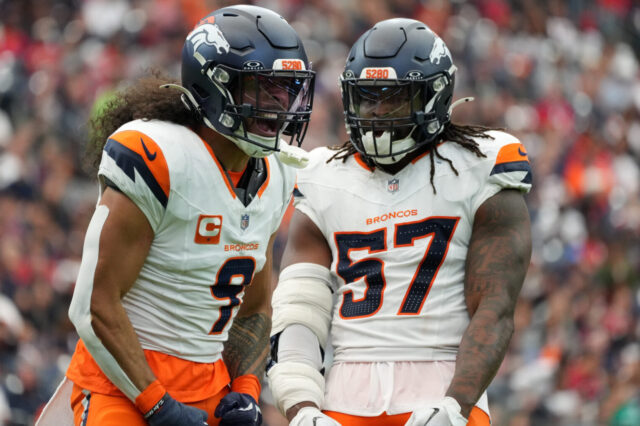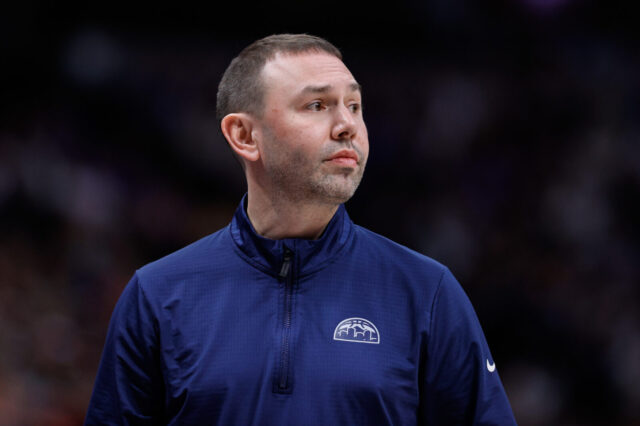Rewind to last offseason, and a lot of people wondered why Sean Payton drafted Bo Nix at No. 12. The Broncos desperately needed a quarterback, but was using their first-round selection on the sixth QB taken in the draft a smart move?
Halfway through the season, though, Nix was cooking, and by the end of 2024 it became clear that he’s “the guy” going forward.
Why Sean Payton drafted Bo Nix: Processing speed
So, what led to the Broncos taking Nix?
According to an excerpt from Seth Wickersham’s new book American Kings: A Biography of the Quarterback, Payton has his own way of evaluating QBs coming out of college and how fast their processing speed is.
Payton came up with a formula: He looked at the rate of negative plays against Mahomes’s total drop backs: percentage of sacks, fumbles, interceptions, then added them together for the average. (He also liked to see a quarterback’s completion percentage, although it wasn’t factored into the algorithm.) Like golf, a low score was best.
Wickersham goes onto explain how in 2017, Payton was ready to draft Patrick Mahomes to the Saints. New Orleans had the No. 11 overall pick, and Mahomes looked like he’d fall to them. But the Chiefs jumped up in a trade with the Buffalo Bills at No. 10, and swiped Mahomes, who has revolutionized quarterback play over the last half-decade.
Attempts: 1,349 Sacks: 68 (5%) Fumbles: 14 (1%) Interceptions: 29 (2.1%) Completion percentage: 63.5 Average: 8.1
Payton liked that score. It meant that on average, something negative happened only 8.1 percent of the time.
The Broncos head coach continued to use that formula when evaluating quarterbacks in the 2024 NFL Draft. According to Wickersham, Caleb Williams’ number was 17.5, and Drake Maye’s was 10.5. Each higher (worse) than Mahomes’. J.J. McCarthy’s number (7.8) was better than those two, but Bo Nix’s was the best.
Attempts: 878 Sacks: 10 (1.1%) Fumbles: 0 (0%) Interceptions: 10 (1.1%) Completion percentage: 74.8 Average: 2.3
Which, again, means a negative play only happened 2.3% of the time for Nix during his senior season at Oregon.
“If a quarterback is sacked quite a bit in college, per drop back, you can improve that some,” Payton says now. “But it generally means the processing is a little delayed.”
Last year’s numbers for Nix: 567 attempts, sacks: 24 (4.2%), fumbles: 3 (0.5%), interceptions: 12 (2.1%), completion percentage: 66.3, average: 6.8.
Processing speed is important to all aspects of quarterbacking
For an NFL quarterback, processing speed is crucial before games as well as during them.
In the book excerpt, Wickersham explains that Payton gave Mahomes a 17-page packet of plays to study the day before meeting him in pre-draft workouts. And Mahomes aced the test. Likewise, Nix memorized the play packet the Broncos give to all draft prospects in 2024.
Learning the plays, and processing what’s supposed to happen during them, is key for great quarterback performance. Not only that, a QB has to look over a defense and decide if their play will work against it, then check to another before the snap if need be.
And that quick processing is again needed after the snap, when defenders are rushing him. He got to decide what to do, where to go, and where to throw the ball.
Nix did a great job of that last year as a rookie. He avoided many sacks, 15 total according to FTN, and also made a lot of great off-platform throws, too.
That’s likely why Payton has been talking about Nix’s processing speed a lot in training camp the last week.
“I think the processing is very important,” Payton said of why Nix is difficult to sack. “That’s the first sign for us of a heavily sacked quarterback, is processing. Then I would say those awkward positions, he throws pretty well from. The off-platform throws, not the orchestrated ones that you see necessarily at the pro days, but literally the slight movement in a pocket throw, the flush to the left and getting your hips around throw. He can deliver the ball in a lot of different areas. So he’s a challenge to get to. I’ve said this before, I think that statistic, that sack statistic, more often than not, is a quarterback statistic than it is an offensive line statistic. I think that we’re not in those minus situations near as much as you could be if he didn’t have that skill set.”
Almost every week, a game preview is sure to mention that the quarterback must protect the ball. Turnovers are a recipe for disaster in the NFL. But negative plays, like losing yards on sacks, are hugely important too. Because when a team loses yards, they’re now “behind the sticks” and give the advantage to the defense who likely knows they will need to pass to gain a first down.
As so many GMs and coaches are struggling to figure out if a great college quarterback’s play will translate into NFL success, is it possible Sean Payton cracked the code? With Bo Nix at least, it seems he did.



